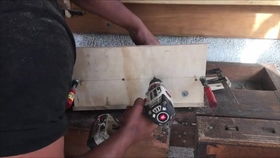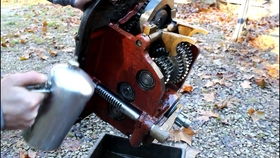Belt Sanding Table: A Comprehensive Guide for Woodworkers
Are you a woodworker looking to elevate your craftsmanship? A belt sanding table is an essential tool that can help you achieve smooth, professional finishes on your projects. In this detailed guide, we’ll explore the various aspects of a belt sanding table, including its features, benefits, and how to choose the right one for your needs.
Understanding the Basics

A belt sanding table is a stationary woodworking tool designed to provide a flat, stable surface for sanding wood. It consists of a table with a moving belt that runs across it, allowing you to sand large pieces of wood with ease. The belt sanding table is ideal for smoothing out rough surfaces, removing splinters, and achieving a smooth finish on your projects.
Key Features of a Belt Sanding Table

When shopping for a belt sanding table, there are several key features to consider:
| Feature | Description |
|---|---|
| Motor Power | The motor power determines the speed and efficiency of the sanding process. Look for a motor with at least 1 horsepower for optimal performance. |
| Belt Size | The belt size should be large enough to accommodate the largest piece of wood you plan to sand. Common sizes include 4×24 inches, 6×24 inches, and 8×24 inches. |
| Variable Speed | Variable speed allows you to adjust the sanding speed according to the wood type and desired finish. This feature is particularly useful for sanding delicate or soft woods. |
| Table Size | The table size should be large enough to accommodate your workpiece and provide ample space for sanding. Look for a table with a minimum of 24×24 inches. |
| Adjustable Table Height | An adjustable table height allows you to sand workpieces of different thicknesses without having to change the belt position. |
| Casters | Casters make it easier to move the belt sanding table around your workshop. |
Benefits of Using a Belt Sanding Table

Using a belt sanding table offers several benefits for woodworkers:
-
Improved Sanding Efficiency: A belt sanding table allows you to sand large pieces of wood quickly and easily, saving you time and effort.
-
Consistent Sanding Results: The flat, stable surface of a belt sanding table ensures consistent sanding results, reducing the risk of uneven finishes.
-
Reduced Strain: Sanding large pieces of wood by hand can be physically demanding. A belt sanding table helps reduce strain on your back and arms.
-
Increased Safety: Belt sanding tables are designed with safety features, such as dust collection systems and emergency stop buttons, to protect you from accidents.
How to Choose the Right Belt Sanding Table
When selecting a belt sanding table, consider the following factors:
-
Workshop Space: Ensure that the belt sanding table fits comfortably in your workshop, taking into account the space required for operation and storage.
-
Budget: Belt sanding tables vary in price, so determine your budget and look for a table that offers the best value for your money.
-
Woodworking Needs: Consider the types of wood you work with and the finishes you aim to achieve. Choose a belt sanding table with the appropriate belt size, motor power, and speed settings.
-
Brand Reputation: Research different brands and read reviews to ensure that you’re purchasing a reliable and well-built belt sanding table.
Conclusion
A belt sanding table is an invaluable tool for woodworkers seeking to improve their craftsmanship and achieve professional-quality finishes. By understanding the basics, key features, and benefits of a belt sanding table, you can make an informed decision when selecting the right tool for your needs














